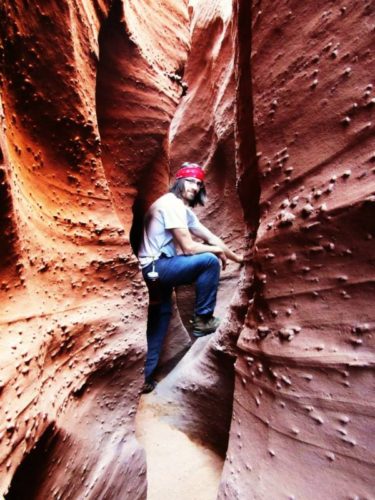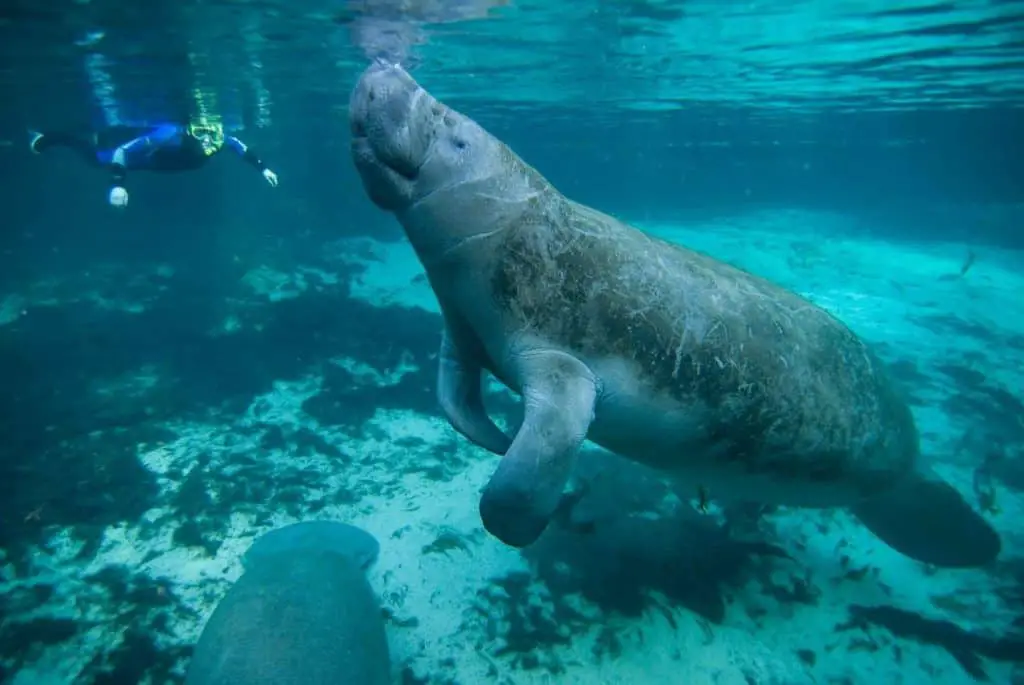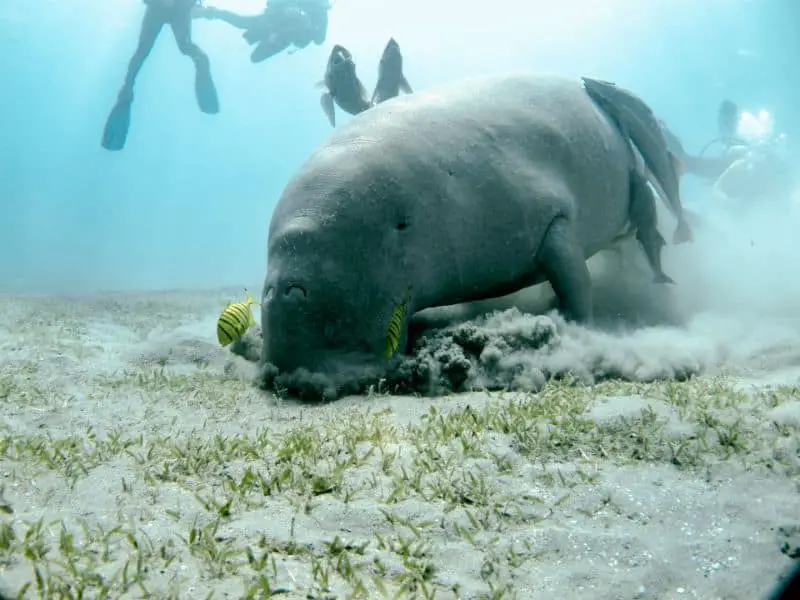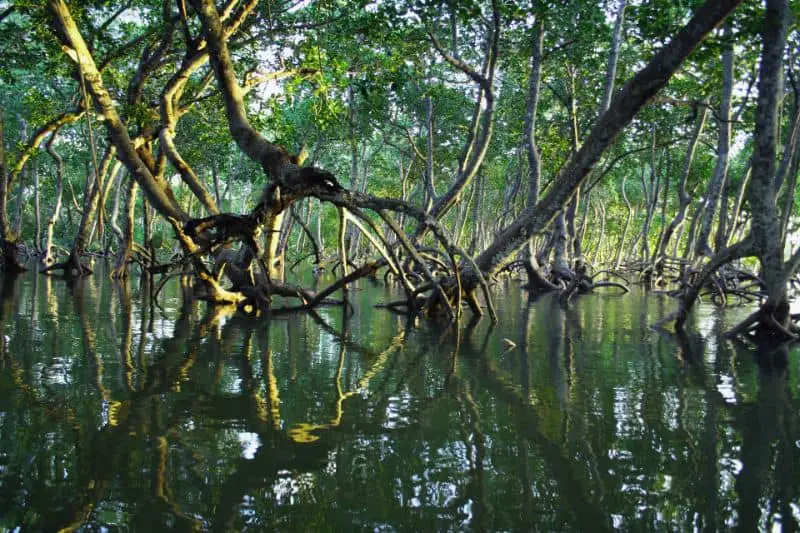
Family-Friendly Canyoneering in Utah’s Slot Canyons
Adventure Is Calling If you’re looking for the perfect family-friendly blend of hiking, scrambling and

There is just too much beauty in the water. Snorkeling allows you to explore that beauty closely. Snorkeling allows you to breathe while you’re swimming so you can admire all that the underwater world has to offer. Sure, there are snorkeling spots everywhere, but the manatees in Florida will blow your mind!

Devleena Dash: A writer by profession, I play with words to make a living, to survive. And then, I turn to mountains and waterfalls to come alive. On most days you’ll find me trekking, hiking, and jumping into all kinds of water bodies I come across. I love adventure sports and try out new ones whenever I can. When I am not trekking, I explore the city on my longboard, hang out with my fam and friends, write poetries, letters, read and cook.
Manatees are gentle giants, known as the “sea cows” of the ocean. Plagued by climate change, motorboats and the shipping industry, these loveable, huggable creatures seek refuge in the lagoons and mangrove swamps of south Florida.
If you can imagine swimming next to a shark – swimming with a manatee is the exact opposite. There’s no imminent risk of life and limb. It’s just you hangin’ out with one of nature’s kindest creatures (and her baby, if you’re lucky!)
To get up and close and personnel with a manatee, you’ll need to go snorkeling.
Snorkeling is the activity of swimming underwater while using a snorkel. A snorkel is a type of diving mask with a shaped breathing tube. This tube floats out of the water and allows you to breathe while you swim. Because of this you can stay under the water for longer and have a great time.
Snorkeling allows you to be one with nature and elevates your mental health. Being around water is associated with being calm and bringing peace. Just floating around with your snorkel and watching fishes and coral go by is one of the most heartwarming and calming experiences to have
Snorkeling isn’t hard. It takes a little bit of time getting used to wearing a diving mask all the time (expect a brief panic attack your first time) but after that, you’re good to go.
The basic requirement for snorkeling is you know swimming. But if you don’t, you can always wear floats and choose a shallow spot and snorkel away. Wearing a 2mm or 3mm wetsuit will help you float, too.
If you check all these boxes, you’re good to go.
If you have neck or mobility concerns, you can wear specialty snorkels like the PowerBreather.
You must follow a few etiquettes to snorkel properly without hurting others.




Manatees need to be in water that is no colder than 68 degrees Fahrenheit to keep a safe body temperature. So the tropical and sub-tropical coasts of Florida are the perfect place to spend the winter!
But manatees don’t visit the white sand beaches of the Atlantic. You’ll see manatees in coastal brackish rivers, alongside mangrove swamps, and in salt water springs. They are present along both Gulf Coast and Atlantic Coast, but most of the hotspots are around the Keys and the Everglades.
Don’t go to Florida in the summer. Just don’t. The mosquitoes are brutal and the people are perturbed. The best time to go snorkeling with manatees is in the winter, between November and April.
Be very careful while swimming with these mammals. They are sweet and harmless so don’t harm them either. Do not feed them, try to ride them or litter their habitat. Be respectful and enjoy.

Crystal River Florida is one of the rare places where you can snorkel with manatees. This place has a huge population of manatees and is harmless to humans. Manatees are friendly gentle giants and you are going to have the time of your life swimming with them. Because of this reason, it is also known as the Manatee capital of the world. It is an hour’s drive away from Tampa is absolutely beautiful. A sense of peace washes over you as you float around in this crystal river with these mammals floating beside you.
Other places to watch or snorkel with Manatees are Manatee Springs State Park, Blue Springs state park, Lee County Manatee Park, Manatee Lagoon, Lovers Key State Park, Homosassa Park, and Wakulla Springs.
Though all of these places are beautiful and will take your breath away, not all of them are suitable for snorkeling. Crystal River has the highest population of manatees in Florida and this spot is easily accessible. Most of the Crystal River Manatees aren’t afraid of humans so you can have a gala time swimming with them.

Devil’s Den is one of the most unique places to snorkel in Florida. This privately owned property is actually a cave and you can snorkel in the beautiful cool waters it has. Equipment can be rented on-site and you just have to follow a set of stairs to find yourself in snorkeling heaven.

This remote island is also a national park and is one of the most pristine places in Florida. It is a different world in itself and houses a large number of land and aquatic animals. Exploring here would introduce you to something new every few minutes. This place is famous for its sea turtles and beautiful coral reefs.
The water here is crystal clear and it is filled with secret spots to check out. The Park is accessible only by ferry and is $190 per person. This seems costly but this includes breakfast, lunch, complimentary snorkeling gear, and a tour of the famous Jefferson fort.

While in Florida you always have a chance to snorkel in natural springs. Ginnie Springs is a popular snorkeling spot in Florida. You can find bass, gar, and turtles here. You can also camp here in the campground they have and explore the nightlife this place has to offer. This means you can go snorkeling here at night too. Ginnie Springs is based by the Santa Fe River and is an hour’s ride to the northwest of Gainesville.

This is a very unique spot to go snorkeling in Florida. This site was home to America’s first undersea park. Cannon Beach and Banana reef are the most popular sites at this place. You can find shipwrecks, huge schools of fish, and Christ of the Abyss sculpture, sunk about 20 feet deep inside this spot.
Banana Reef is popular due to its rich aquatic life with barracudas, parrotfish, and brain coral. Since this is a shallow snorkeling spot, it is perfect for beginners too.
Normally Snorkeling is a safe sport. But still there are a few risks you should be careful about. Since you’re using a snorkeling mask, there is a chance that water will get into your mask, especially when you are a beginner. Make sure you use good quality gear and stay in a horizontal position. Tilting your head too much can cause water to seep into your mask.
Be careful of currents. Even expert swimming skills are rendered useless in a heavy current. You can’t compete with nature. Also be careful of venomous creatures that can harm you. Be careful of jellyfish, venomous sea snails and slugs, snakes or corals.
Try not to dive into the waterbody. Since snorkeling spots are mostly shallow, you can end up either hurting yourself of hurting the Marine life.
Snorkeling will introduce you to a whole new world of flora and fauna. One will get to see corals, fish, starfish, shells, turtles, oysters, anemones and many kinds of new plants.
Manatees are one of the sweetest marine animals you’ll ever meet. These marine herbivores are also known as sea cows and are gentle giants. Swimming with manatees should definitely be on your bucket list and will be a heartwarming experience.



Snorkeling is a full-body exercise. You should have muscle strength a strong core and legs to help you keep afloat and going in wild waters.
The primary gear for snorkeling includes a snorkel mask, a snorkel and swim fins.
Snorkeling doesn’t need extra safety equipment, you just have to be vigilant. However, you can use a flotation device or a snorkel keeper (Completely optional) for extra assurance
Extra clothes, wet suit for cooler waters, Personal hygiene products, etc.
Carry a first-aid box, towels, water bottle because you will get dehydrated, bags to carry wet equipment.
The cost of Snorkeling is usually cheap. You can easily get Snorkel masks, tubes and fins under for $20-$70 from Amazon or any adventure goods store. Advanced equipment might cost more but it wouldn’t burn a hole in your pocket. If you do not want to buy equipment most spots provide equipment on rent.
There is no safety equipment as such for Snorkeling but if you’re planning to carry a float then you can get a float from amazon or any retail store for very cheap. Be sure of getting good quality products though. You can also use a snorkel keeper to fasten your snorkel mask securely.
Snorkeling spots are surrounded by many street-food spots and restaurants. Beaches have many local vendors selling food, fruits too. Food isn’t at all costly in these places. But make sure to eat after you come back from snorkeling and don’t take any food with you into the waterbody. Some national parks and resorts provide complimentary breakfast and lunch so be sure to grab that.
Accommodation ranges from hostels to Villas to camps, choose your accommodation according to your budget, the place you want to go snorkeling at and, the time you have at the place.
If you’re flying out from another country, the flight tickets cost according to that country. Living near the waterbody cuts the cost of traveling altogether. There is public transport that will take you around places for very cheap. The costliest transportation to snorkeling spots are seaplanes are ferries.

Yes, Snorkeling is for everyone. From little kids to middle-aged adults, everyone can enjoy snorkeling. However, beginners and kids are advised to use floatation devices and have another person with them at all times.
Can non-swimmers go snorkeling?
Yes! Non-swimmers can snorkel too with the help of flotation devices. Just make sure to have an expert by you and choose shallow spots.
Make sure you use the washroom before you start Snorkeling. But if you absolutely have to go, you can go in the waterbody but try your best not to. Come back and clean your gears and clothes properly.
See Notes on transportation in the Finances & Budget section.
See notes in the “Where and When to Go?” section.
Yes, there are plenty of guides that teach you how to Snorkel. Most of the snorkel spots also have snorkel guides to help you even if you’re a beginner.

Adventure Is Calling If you’re looking for the perfect family-friendly blend of hiking, scrambling and

Adventure Is Calling It has been a challenging year; as we transition into new norms

Adventure Is Calling The Bay Area is known for attracting thousands of people to experience
Copyright 2024 – Adventure on the Cheap (SRVS)